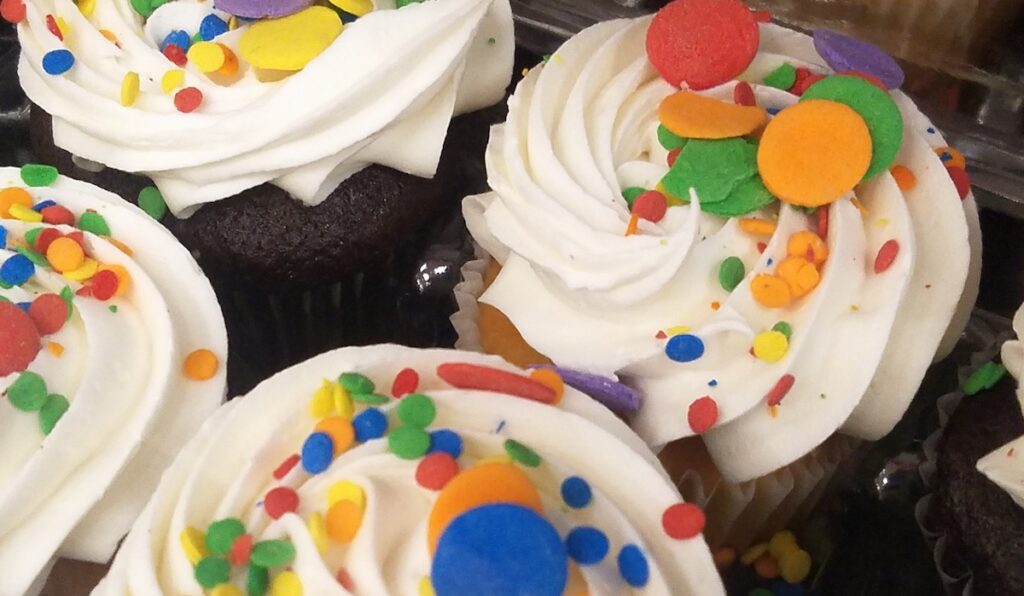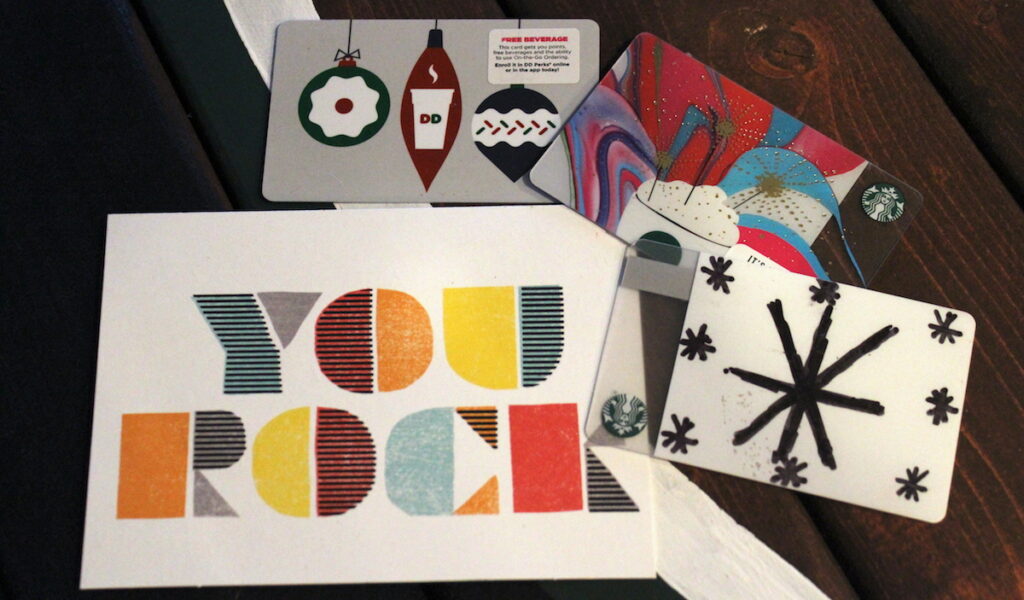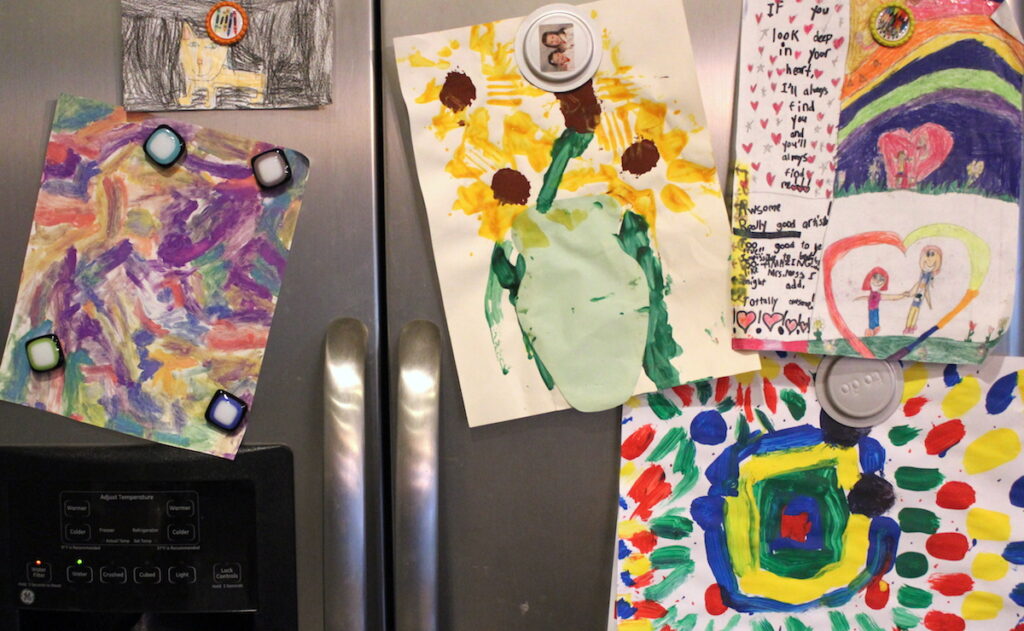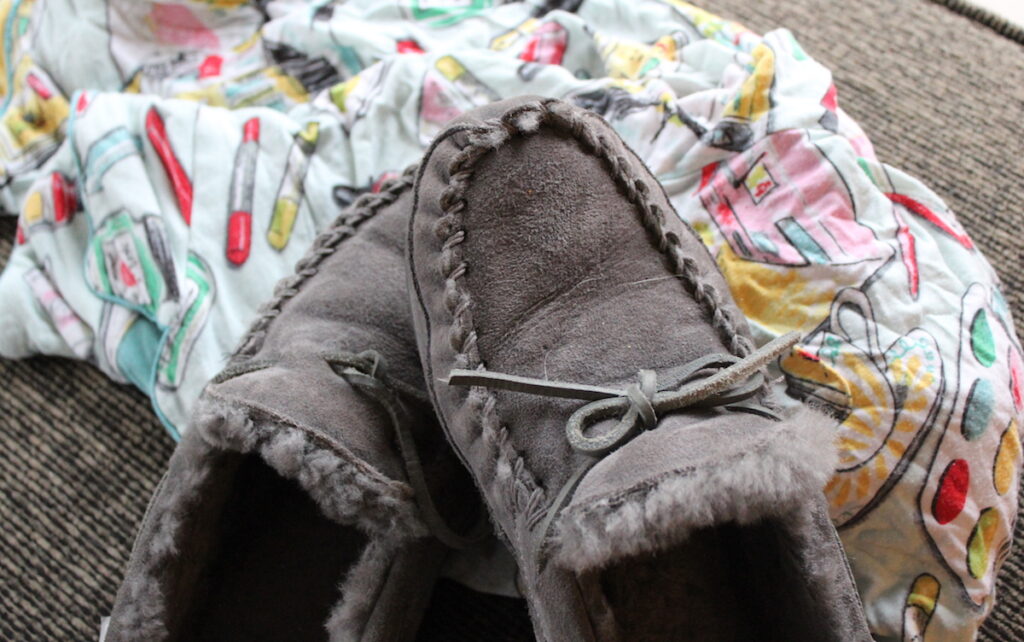It’s no secret spring is a busy time for elementary art teachers. You may have an art show to prep for, a professional evaluation to get through, and report cards to fill out. When all of these things happen simultaneously, it can be easy to fall into a “grass is greener” mentality. Some days, it sure looks a lot easier to sell life insurance!
But, the truth is, being an elementary art teacher is the most gratifying job in the world. Here are 20 reasons why:
1. Your students WANT to be in your room.
Elementary students crave their art time. In an educational world driven by data and dictated by assessment, the art room is a space where hands-on life skills are still taught. The kids look forward to art, and you are always met with shouts of “Is it my art day?!” in the hallway.
2. You get to have hilarious interactions while out in the community.
When elementary students spot you “out and about” in the community, they react in the funniest ways. Sometimes, they are confused because they didn’t realize that you go to Target like a “normal person.” Other times, they feel they have just spotted a midlevel celebrity, and need to shout accordingly.
3. Your students believe you can draw, make, or fix anything.
After having elementary students for a few years, they grow accustomed to seeing your artmaking skills. This seems to translate into a belief that you can make anything, as if by magic. It is flattering when they initially think you painted Van Gogh’s Bedroom.
4. You are inundated with birthday treats.
If you are in a district that still permits birthday treats from home, you literally have a “sweet” gig as the birthday cupcakes, cookies, and donuts roll in day after day.

5. You aren’t the worst dancer in the room.
When you turn to Go Noodle for a much-needed brain break, the kids love to bust out their best dance moves. Unlike the last wedding reception you attended, nobody is judging how well you do the sprinkler because they are all totally absorbed in their own steps. You can literally “dance like no one is watching” in a room full of 8-year-olds.
6. Your students create the best unfortunate accidental drawings.
Most elementary students are still in a very innocent phase of their lives. This is probably why they sometimes unknowingly draw the most hysterically inappropriate things when viewed from an adult perspective. Whether it is a cannon, a baseball bat, or something else; it always makes you privately chuckle. Well, until they draw them on purpose, which is a whole different article!
7. Your assistance is solicited and repaid with Starbucks gift cards.
Whether it is a project for the school Girl Scout troop or a colleague who needs help making a bulletin board, everybody seems to want advice from their elementary art teacher. When word gets out you appreciate being caffeinated in exchange for your expertise, most days the venti white mocha is free.

8. You gain amazing antibodies.
Elementary schools are the Petri dishes of the educational environment. Whether it is strep, influenza, pink eye, or a stomach bug, it feels like there is always something gross being passed around. Work in these conditions for a few years, and you will develop an immune system made of steel!
9. You get to answer hysterical hypothetical questions.
At the elementary level, “there are no stupid questions.” This leads to a lot of conversations that baffle the adult mind. “Where do we go if we have a tornado drill and a fire drill at the SAME time?” “What if you glaze your arm and put it in the kiln; will you be a superhero with a glass arm?” “What would happen if we ate all this glue?” In a world as complicated and challenging as ours, it’s comforting to think about these things at night…after locking the kiln room door.
While teaching elementary students is amazing, it also comes with challenges, especially with your youngest students. If you’re looking for new strategies to use with your kindergartners, you won’t want to miss the AOE course Rethinking Kindergarten. You’ll dive deep into a variety of strategies, tools, and methodologies sure to support the budding artists in your classroom and investigate a variety of progressive philosophies, including Reggio Emilia, Montessori, and Waldorf. Don’t miss it!
10. The truth hurts, but less so from young children.
When I get a new hairstyle or buy a new outfit, sometimes things don’t turn out as I had pictured when I saw a photo on Pinterest. I can count on my husband and friends to boost my ego with some small “white lie” compliments when I am looking less than stellar. But, you can really depend on the K-2 set to give it to you straight, no matter what. “Why is your hair orange?” “That looks like a dress that a witch would wear.” “Are you having a baby?” Ouch. But, at least you know what everyone is really thinking!
11. Your students keep you young.
No one is as keyed into the whims and ways of elementary kids more than art teachers. Your friends in other industries probably can’t name all the Pokémon, describe five distinct recipes for slime or explain the latest toy egg reveal on YouTube. We are current with the cultural trends in a way other adults don’t get to be.
12. Chocolate milk out of the carton still tastes amazing.
And while we are at it, sometimes the hallways smell like cooking tater tots. It’s the simple things, guys.
13. Your fridge is never bare.
Barely a day goes by you don’t receive a sketch or drawing created by an adoring elementary fan. They love to create artwork for their teachers, and you would need a refrigerator the size of Texas to display all of their masterpieces.

14. You get to experience the seasons like a child.
For most adults, the seasonal changes are marked with a passing interest. But, at the elementary level, the kids notice and experience the subtleties of the seasons on a granular level. It starts when the leaves begin to fall. They bring you the reddest one they can find from the playground, out of sheer wonder. Later, it is the first snowfall of early winter. The kids all rush to the window, pushing their faces to the glass to see the first flakes. In the spring, you begin to get bouquets of dandelions, plucked from the grass as they come in from the busses. Time seems to pass so sweetly in the elementary world.
15. You get to be the first to shape their artistic lives.
As an elementary teacher, you are frequently the first formal art experience your students have had. Everything you show them, from wax resist to glazing a pinch pot, is new and magical. Sometimes they gasp and clap at the most unexpected things because they are new and novel. Nothing is quite as rewarding as getting a standing ovation from first graders when you show them how to pull a print.
16. You get to participate in silly dress up days at school.
While your friends don suits and ties for their corporate jobs, there are work days where you “dress like a twin,” wear a costume from another decade, or are clothed head to toe in your school colors. Then there are the days that elementary teachers get to wear pajamas to school. Nothing compares to the comfort of being wrapped in flannel while wearing your slippers to work. Ah, pajama day!

17. You get to be reminded what pure creativity looks like on a daily basis.
Our youngest artists express themselves with uninhibited, purely imaginative joy. Whereas we actively encourage older students and adults to “think outside the box,” our elementary students aren’t even aware the “box” exists. “I’d like to make a turquoise elephant princess with pierced ears who works at McDonald’s.” Yup, I’d like that too!
18. Kids say the darndest things (and it’s super entertaining.)
Oh, to be a fly on the wall during their studio work time! It is unbelievable to hear the thoughts students share with their guard down, as they paint or draw. “My mom has hair growing on her legs. She has to shave it off.” “Yeah, well my dad’s hair isn’t growing on his head… he is going bald but don’t tell anybody.” Hmmm, I wonder what my own kids are sharing at school?!
19. You must work to master content and pedagogy.
I’ve heard it said classroom teachers at the elementary level are masters of pedagogy. They have an arsenal of strategies to reach all learners. I’ve also heard classroom teachers at the high school level tend to be experts in content. They deeply understand the subject they teach.
Elementary art requires an exciting intersection of both. In order to wrangle upwards of twenty-five small children with paintbrushes, they must have an extensive repertoire of art knowledge AND hone the pedagogical skills to keep things from getting chaotic. It can take an entire career to master both, and this challenge makes every day new and exciting.
20. You continue to influence students long after they leave your classroom.
Nothing is more gratifying than running into former students and hearing how the time spent in your room influenced their lives. Whether they continued with art beyond elementary school, picked up a lifelong hobby, or entered an arts-related career, knowing you successfully shared your passion for art with another person makes it all worth it!
What do you love most about your job?
If you teach middle or high school art, what makes your teaching experience at that age unique and special?
Magazine articles and podcasts are opinions of professional education contributors and do not necessarily represent the position of the Art of Education University (AOEU) or its academic offerings. Contributors use terms in the way they are most often talked about in the scope of their educational experiences.





